Angeline Vernon Milner
"…the influence of her life is as enduring as the stone in which her name is now engraved."
Angeline (or “Ange.” as she signed her name) Vernon Milner served as the University’s first full-time librarian from 1890 through 1927 and was a respected and beloved member of the campus community. Her forward-thinking, student-centered initiatives laid the foundation for today’s library named in her honor.
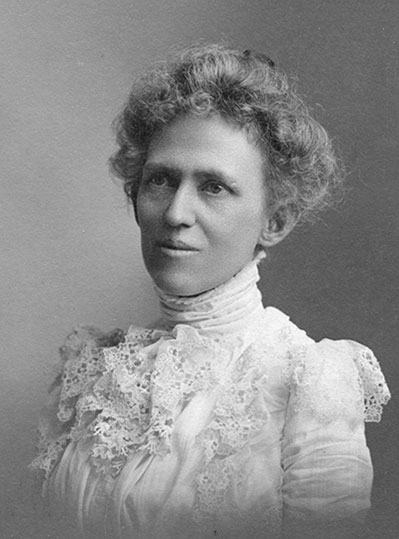
Among Milner’s accomplishments during her 38-year career include:
- transforming several thousand books into a systematically arranged collection totaling more than 40,000 volumes
- serving as a national and regional leader in the library profession
- designing and implementing a nationally recognized library instruction program
- publishing over 80 articles and books
- earning the respect and admiration of students and faculty.
In February 1890, the University’s Board of Education hired Bloomington-Normal native Milner to complete the short-term project of rearranging, classifying, and cataloging five collections of books into a single, centrally located collection. Milner completed the task by the beginning of the fall 1890 semester and exceeded the Board’s expectations. They created a permanent position for Milner, establishing her as the first dedicated University librarian.
Improving library access and collections
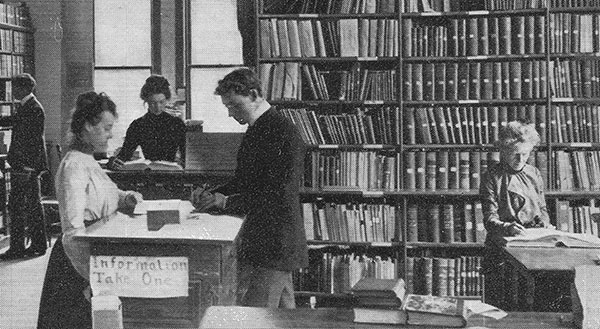
Over the course of Milner’s career, she migrated her handwritten book inventories into a more user-friendly Dewey Decimal card catalog. She replaced her annotated bibliographies with new commercially published article indexes. She advocated for improved and expanded library facilities, electric lighting, and more comfortable study spaces. She extended hours by opening the library in the evenings and weekends. Milner created libraries from spaces in Old Main (1890-1898), Cook Hall (1898-1914), and North Hall (1914-1940).
Milner believed a library could be a “social center” and was “always eager to take on new forms of service” to accommodate the changing needs of students and faculty. She looked for innovative approaches to help students learn. She held well attended library open houses and worked with students to create illustrated programs and elaborate exhibitions.
Library instruction
As early as 1892, Milner taught students how to use library sources with hands on, active learning exercises. She designed a ten-lesson library course all students were required to complete. Katharine L. Sharp, nationally prominent librarian and first library director for the library school at the University of Illinois, recognized Milner’s instruction program as "the strongest continuous influence [that] has been exerted in the state of Illinois."
Leader in the profession
Milner kept up-to-date with the rapidly changing library profession by maintaining an active membership in the American Library Association (ALA) and National Education Association (NEA). Recognizing a need for a regional library association, she was a charter member of the Illinois Library Association (ILA). Her colleagues in ILA elected her to serve as its president, vice president, secretary, and councilor.
Scholarship
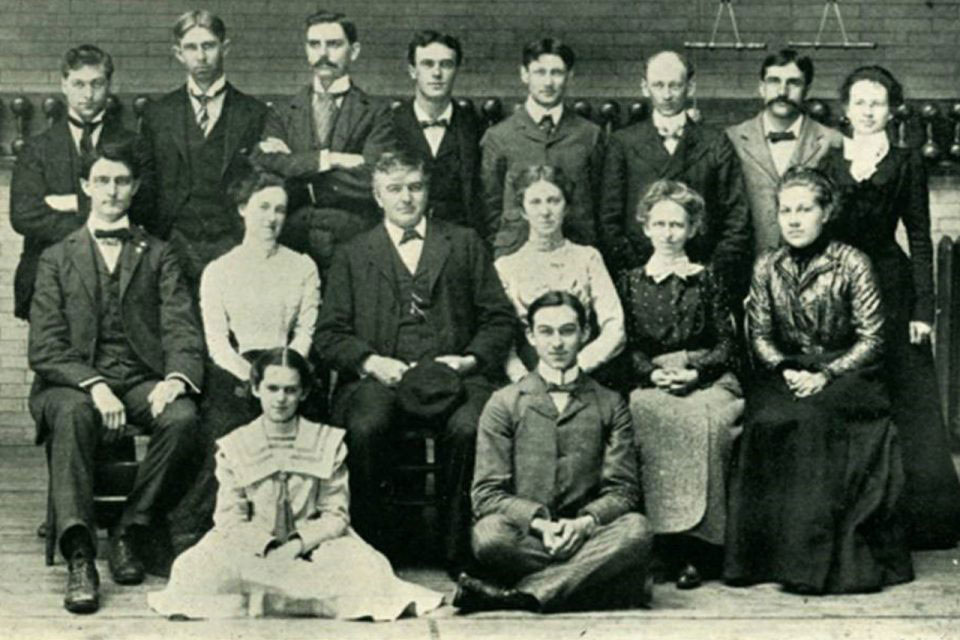
Just as Milner learned from her colleagues, she shared her knowledge. She was a prolific author in the field of librarianship, writing more than eighty articles and books. Her works became recommended readings for other librarians. Her topics were wide-ranging, but a common theme was helping librarians and teachers create effective small and rural school libraries. Learn more at Faculty Research at Illinois State University: A Bibliography of Historical and Current Scholarly Works.
"Aunt Ange."
Admired and respected throughout the campus, students affectionately referred to her as “Aunt Ange.” Known for being kind and direct, they knew where to turn for help and appreciated that Milner’s interests extended beyond the walls of the library. Milner actively attended athletic events and elicited enthusiasm with her “splendid ‘pep’ talks.” For many years she worked alongside students creating the yearbook (The Index) and the student newspaper (The Vidette).
"My Dear Miss Milner"
During the First World War, she organized a letter-writing campaign to former and current students and faculty serving abroad or on the home front. She wrote more than 600 letters and received many in return often addressed to “My Dear Miss Milner.”
Milner was selected to serve on the University’s War Service Committee. Here she enlisted the help of students and others on campus to compile a permanent War Roster file. The Illinois State Historical Library pronounced Illinois State (Normal) University’s War Roster as one of the most complete in the state. When the war ended, she preserved the wartime correspondence and other documents for future generations. Learn more at the World War I Posters.
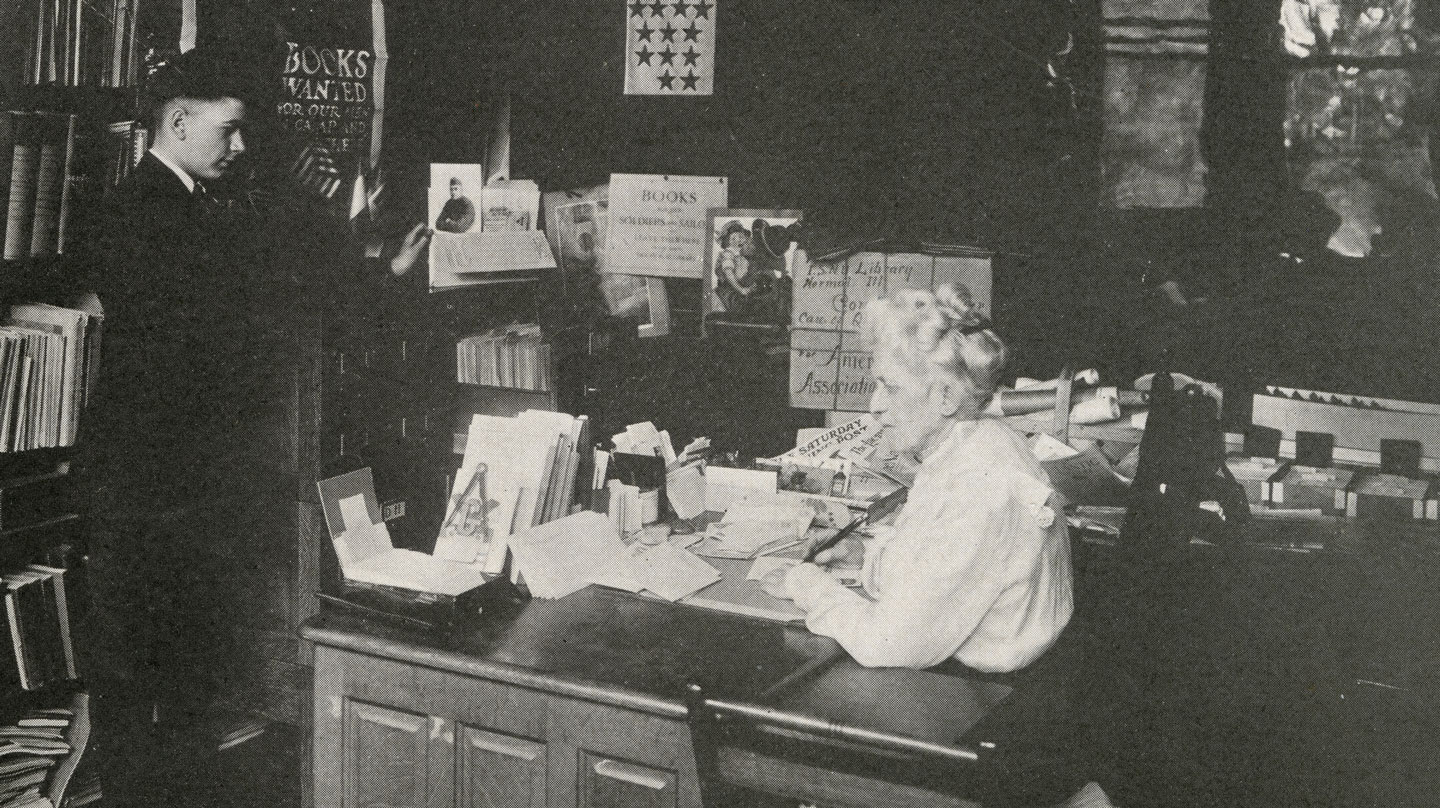
Milner was a prominent figure on campus until the fall of 1927 when illness forced her to cease active work. She died January 13, 1928. Classes were canceled during Milner’s memorial service held in Capen Auditorium. So many came to pay their respects, the auditorium was filled to capacity. An editorial in the local newspaper, the Pantagraph, conveyed the affection, esteem and respect felt toward Milner:
“Normal University will not seem like the same place without the smiling presence and genial personality of Miss Ange. V. Milner, for 38 years librarian of the institution. Her death on Friday brought to a close a life of useful and helpful service such as has few parallels in local institutions or those of any other part of the state. Her contacts with young people, her charitableness, her vast fund of information concerning the library have influenced many lives. Her record will long remain as one of the potent influences in the making of a great institution.”
The first Milner Library (1940-1976)
Ten years after Milner’s death, construction began on a new library at Illinois State. It was the first building at the University to serve the sole purpose of a library. At the Library’s dedication on June 10, 1940, those who knew Milner were in attendance. One of the attendees shared, “…the influence of her life is as enduring as the stone in which her name is now engraved.”
The second Milner Library (1976-present)
In July 1976, after years of planning and lengthy delays, the second building to be known as Milner Library opened. This space was intentionally designed to adapt and transform to changing student needs and technological developments.
The spirit of Milner lives on through her student-centered initiatives. Over the years some claim to have experienced her ethereal spirit as well. Dating back to the 1990s, reports materialized of Milner’s paranormal presence in the original Milner Library (now Williams Hall). A variety of sources have reported on and investigated these otherworldly encounters. Notably, in 2004, the Travel Channel visited campus to shoot a 15-minute segment on Milner's ghost for their haunted campuses special. Learn more from this 2017 Vidette article, "Facts prove Ange Milner’s ghost is nothing but one big 'boo.’"
Milner’s life-size image continues to welcome students to the library. Milner Library follows Ange. Vernon Milner’s lead in believing "…libraries are established to help people, and that libraries are glad to give this help."
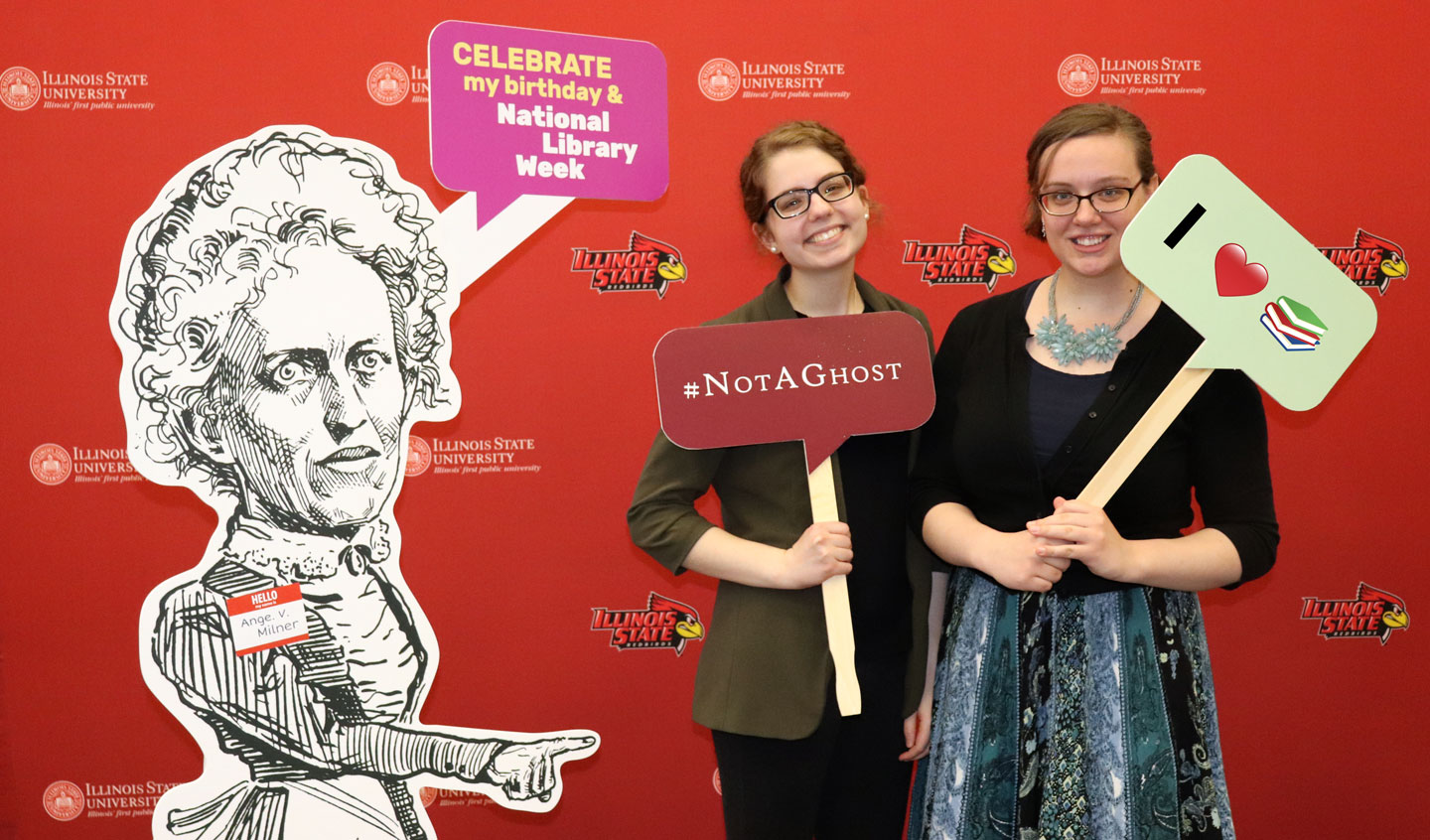
To learn more visit
Researched and written by Angela Bonnell.